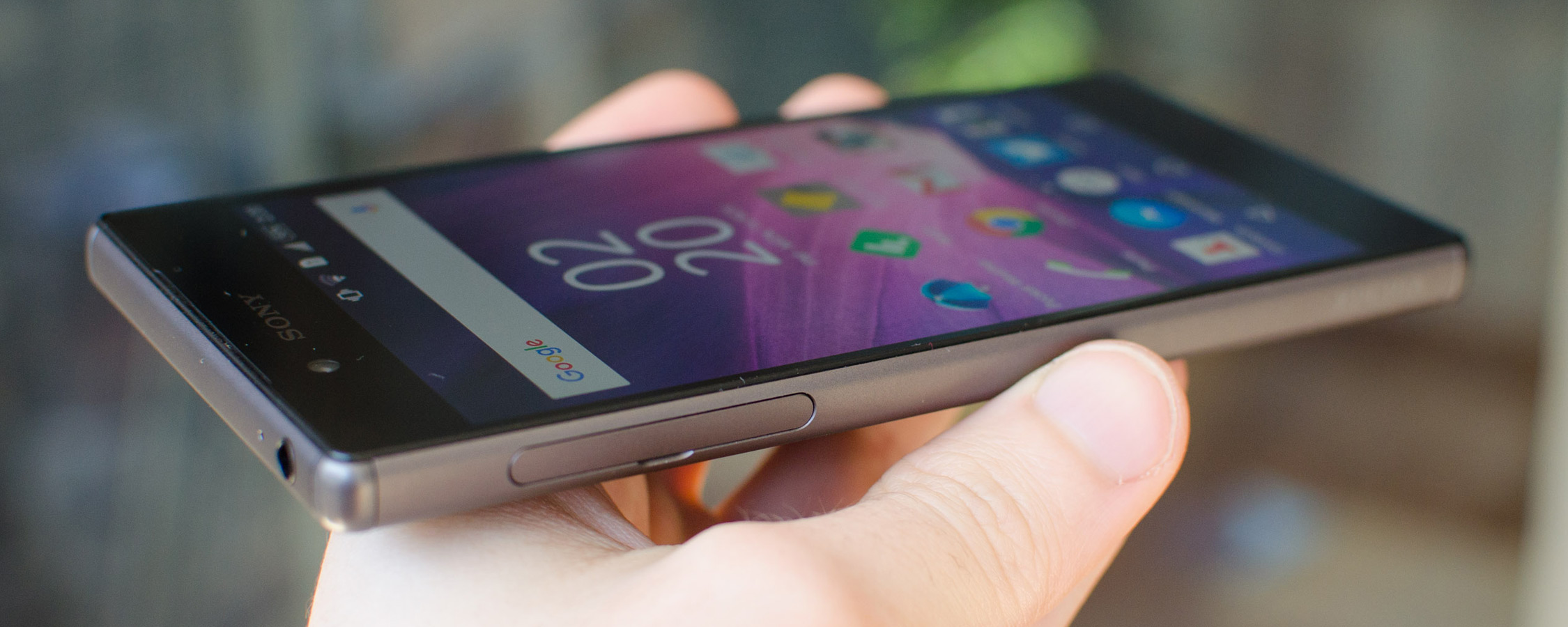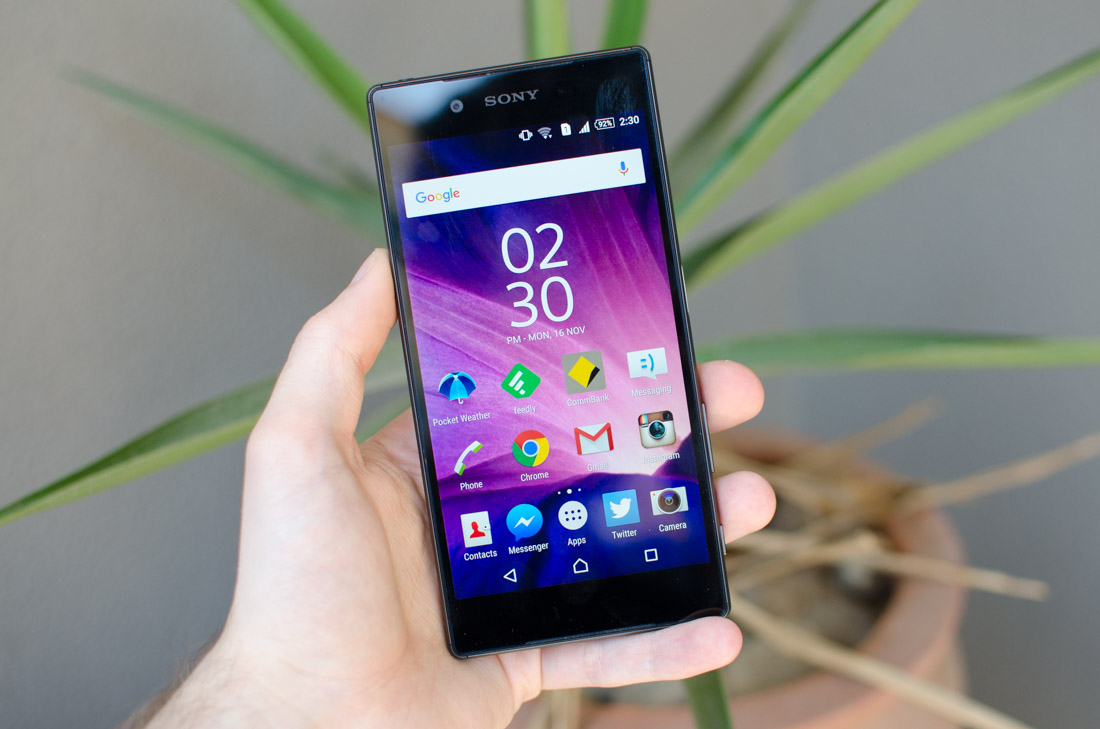Sony is one of the Android manufacturers that you don't hear much about throughout the year, but has managed to consistently produce decent high-end devices for several years now. Last year's Xperia Z3 was a great option for someone after a well-built handset with excellent battery life, while the Z3 Compact was a solid alternative in a smaller form factor.
This year Sony has released the Xperia Z5, which brings a collection of updated hardware to the company's flagship Android device. While technically a successor to the limited-release Xperia Z4, Sony is positioning the Xperia Z5 as a worthy upgrade over the year-old Xperia Z3, or the Xperia Z1 from 2013 for those on two-year release cycles.
In many ways the Xperia Z5 has, on paper, everything you'd want from a high-end smartphone. There's a 23-megapixel camera on the back with "Hybrid Autofocus", allegedly allowing it to focus in as quick as 30 milliseconds. There's also a 5.2-inch 1080p display powered by a Qualcomm Snapdragon 810 SoC, giving a mix of performance and energy efficiency. Sony claims two days of battery life from the Z5's 2,900 mAh battery, which is squashed into a 7.3mm thin water resistant body.
Sony is also keeping up with the competition by including features such as a fingerprint scanner, while retaining favorites like the microSD card slot. Unfortunately, there's no USB Type-C or Android 6.0, so it's lagging behind the latest Nexus phones at launch in that regard.
The design of the Xperia Z5 is similar to what Sony has been using since the original Xperia Z. The handset is very rectangular, with almost no curvature leading to a profile that's flat and slab-like. This makes the phone look deceptively thick: it's only 7.65mm thick, but a handset like the Galaxy S6 (6.8mm) looks substantially thinner. It's also not the lightest handset going around, at 154 grams for its 5.2-inch body.
While the Z5 might look thick, I actually appreciate the slab design of the handset, as it seems more refined and classy than some of its curvy competitors. The bezels that are found above and below the display are a little large for my liking, but the minimalist design on both the front and back is appealing.
Sony has updated their choice of materials for the Xperia Z5: the edges are made from a matte metal that feels more like plastic than the metal you get on the Galaxy S6, iPhone 6s or HTC One M9. In some ways this is a regression from the beautiful curved metal edges Sony used for the Xperia Z3, which I feel were easier to grip than the Z5's slipperier sides. However, the ugly and uncomfortable magnetic docking connector is no more, which is a huge improvement.
Both the front and back of the Xperia Z5 are solid slabs of glass, though for the first time the rear of the handset uses frosted matte glass rather than a glossy finish. This improves the look of the handset and cuts down on persistent fingerprint grime, though it does nothing to improve the durability of the device, and there are already reports that some Z5 back panels have cracked. The rear glass pane on my Xperia Z3 cracked, so let's hope this doesn't happen to the Xperia Z5.
Luckily, the guys over at dbrand provided a wooden skin that has been applied to the back of the handset. It both looks and feels great, and it should improve the durability of the back panel by adding an extra layer between the ground and the glass during any impacts. If you're worried about cracks and don't want to add bulk through a case, a skin like this is the ideal solution.
The Xperia Z5 is still water resistant, like its successors, though we're finally at a stage where all the necessary ports - particularly the microUSB 2.0 charging port - can be uncovered while still maintaining an IP65 and IP68 rating. Where flaps annoyed me in previous Xperia iterations, the Xperia Z5's water resistant design is perfect.
Like with all water resistant devices that are IP65 and IP68 rated, it should be noted that these ratings only apply for fresh water. The device should be fine submerged in a chlorinated pool (though it should be rinsed with fresh water after submersion), but it certainly won't be fine in a saltwater environment such as the ocean.
The exposed microUSB and 3.5mm audio ports are found on the bottom and top edges of the Xperia Z5 respectively, while there's a flap on the left side that conceals a nano-SIM card tray and a microSD card slot. On the left is a very awkwardly-placed volume rocker, as well as a dedicated two-stage camera button that's especially useful when taking underwater photos.
On the left you'll also find the new fingerprint sensor, which doubles as a power button. This positioning of the sensor is the most natural I've seen, and it's easily operated by a right-hander such as myself, though I suspect it will be slightly less convenient for lefties. The travel distance and tactile feedback from the button itself isn't great, though that's somewhat understandable considering it includes a sensor.
The Z5 fingerprint sensor is reasonably fast to operate, unlocking the handset and turning on the display in under a second, though it's not as quick as the iPhone 6s' Touch ID. It's also not as accurate as Touch ID, failing to register my thumbprint on the first try around 15-20% of the time. In general, it's still faster to use fingerprint unlock as a security system than PIN or password unlocking despite its inaccurate moments, and the Z5's implementation is far better than the OnePlus 2's, for example.
The front of the handset features stereo speakers, which are in the ideal position for gaming and watching videos. One of the features I love about the recent Xperia phones are their front-facing speakers, as they're reasonably loud, decent enough in quality, and improve the media consumption experience significantly over having side- or rear-firing drivers.











